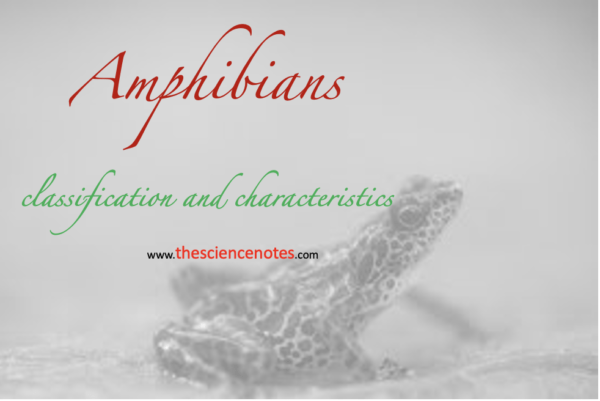Amphibians are a diverse group of cold-blooded vertebrates that possess a unique ability to live both on land and in water. They are characterized by their moist, smooth skin, which enables them to breathe through their skin as well as their lungs. Amphibians undergo metamorphosis, transforming from aquatic larvae into adults with specialized adaptations for terrestrial life.
With frogs, toads, salamanders, newts, and caecilians among their ranks, amphibians display remarkable biodiversity. Their dual habitat allows them to thrive in a variety of ecosystems, from freshwater ponds to dense forests.
Amphibians play crucial ecological roles as both predators and prey, contributing to the balance of their respective ecosystems. Many species are carnivorous, feeding on small animals and insects, while others serve as important food sources for larger predators.
Despite their remarkable adaptations, amphibians face significant challenges, including habitat loss, pollution, and disease. Conservation efforts are essential to ensure the survival of these unique creatures and maintain the delicate balance of our planet’s ecosystems.

General Characteristics of Amphibians:
- Cold-blooded: Amphibians are ectothermic animals, meaning their body temperature is regulated by the surrounding environment.
- Dual habitat: Amphibians can live both on land and in water, adapting to different environments.
- Moist skin: They have smooth, moist skin without scales, which helps them absorb oxygen through their skin. The secretion of mucous keeps their skin moist.
- Webbed feet: Many amphibians have webbed feet, which aid in efficient swimming.
- Vertebrates: Amphibians belong to the group of animals with a backbone or spinal column.
- Respiratory system: They respire through lungs as well as their skin, with some species having external gills during their development.
- Reproduction: Most amphibians lay eggs, and external fertilization is common, although some species internally fertilize their eggs.
- Metamorphosis: Amphibians undergo a complex life cycle with larval and adult stages, often undergoing metamorphosis during their development.
- Carnivorous diet: Adult amphibians are generally meat eaters, consuming small animals and insects like slugs, snails, worms, and spiders.
- Vocalization: Many amphibians produce sounds or vocalize, such as frogs croaking to attract mates.
- Three-chambered heart: Amphibians have a three-chambered heart for circulation.
- Kidneys: They possess mesonephric kidneys and excrete waste materials such as ammonia and urea.
- Cranial nerves: Amphibians have ten pairs of cranial nerves.
- Breeding and reproduction: Breeding typically occurs in water, and the copulatory organs are absent in males.
- Limbs: They have two pairs of limbs for locomotion, with four legs being the common adult characteristic.
- Moisture-dependent: Amphibians require a moist environment to prevent dehydration and maintain their physiological functions.
- Primitive lungs: Their lungs undergo changes during metamorphosis, serving as both gills and lungs in different stages of their life cycle.
- Carnivorous appetite: Amphibians are carnivores, feeding on various small animals and insects.
- Vertebrates: All amphibians possess a backbone, indicating their classification as vertebrates.
Scientific Classification of Amphibians:
- Kingdom: Animalia
- Phylum: Chordata
- Subphylum: Vertebrata
- Class: Amphibia
1. Order Anura (Frogs and Toads):
Characteristics:
- Anurans lack a tail as adults and have a fused head and trunk.
- They have long hind limbs designed for jumping.
- The skin of frogs is typically smooth and moist, while toads have rougher and drier skin.
- Anurans have large, bulging eyes and powerful hind limbs.
Examples:
- True Frogs (Genus Rana): Examples include the American Bullfrog (Rana catesbeiana) and the African Clawed Frog (Xenopus laevis).
- True Toads (Genus Bufo): Examples include the Common Toad (Bufo bufo) and the Cane Toad (Rhinella marina).
2. Order Caudata (Salamanders and Newts):
Characteristics:
- Caudates have long bodies and tails, and they retain their tails as adults.
- They have four limbs of roughly equal size.
- Most species have smooth, moist skin.
- Caudates can regenerate lost body parts, including limbs and tails.
Examples:
- Mole Salamanders (Genus Ambystoma): Examples include the Tiger Salamander (Ambystoma tigrinum) and the Spotted Salamander (Ambystoma maculatum).
- Eastern Newts (Genus Notophthalmus): Examples include the Eastern Newt (Notophthalmus viridescens) and the Red-spotted Newt (Notophthalmus v. viridescens).
3. Order Gymnophiona (Caecilians):
Characteristics:
- Caecilians are legless amphibians with elongated, cylindrical bodies.
- They have reduced eyes or are completely blind, and they lack external limbs.
- Caecilians have specialized skull adaptations for burrowing.
- Their skin is smooth and may have ring-like folds.
Examples:
- Asian Caecilians (Genus Ichthyophis): Examples include the Purple Caecilian (Ichthyophis cardamomensis) and the Striped Caecilian (Ichthyophis tricolor).
- Aquatic Caecilians (Genus Typhlonectes): Examples include the Common Aquatic Caecilian (Typhlonectes natans) and the Colombian Aquatic Caecilian (Typhlonectes compressicauda).
Comparison between Anura, Caudata, and Gymnophiona
| Order | Anura (Frogs and Toads) | Caudata (Salamanders and Newts) | Gymnophiona (Caecilians) |
| Body Shape | Short and tailless | Elongated with tail | Elongated and limbless |
| Limbs | Well-developed hind legs, forelimbs present | Four legs of similar length | Limbs absent or greatly reduced |
| Tail | Absent as adults | Present | Absent or short |
| Skin | Smooth, moist, and glandular | Moist and glandular | Smooth, scale-like, and glandular |
| Habitat | Terrestrial and aquatic | Terrestrial and aquatic | Mostly fossorial (burrowing) |
| Locomotion | Hopping and jumping | Walking and swimming | Burrowing and swimming |
| Reproduction | External fertilization, aquatic eggs | Internal fertilization, eggs laid in water or on land | Internal fertilization, eggs laid in burrows |
| Examples | American bullfrog, cane toad | Tiger salamander, red-spotted newt | Caecilian, Congo caecilian |